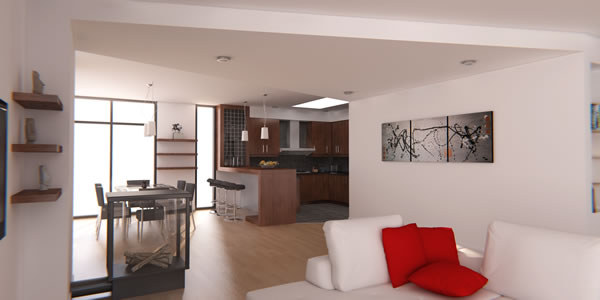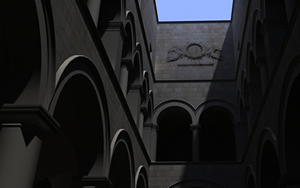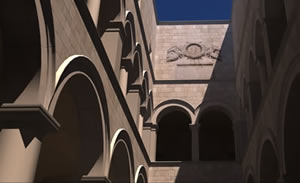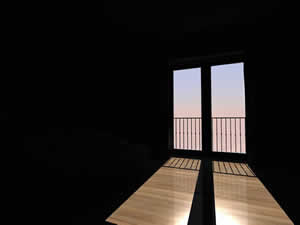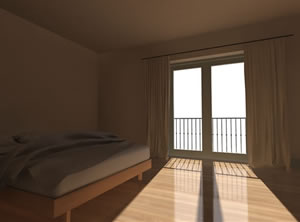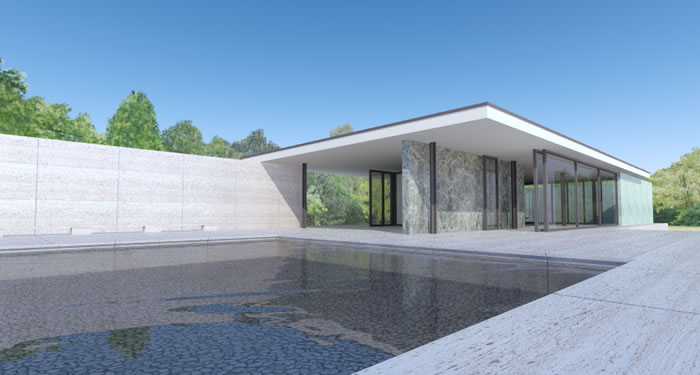Why upgrade from 1.7 to V2: A migration guide |
|||||||||||||||||||||||||||||||||||||||||||||||||||||||||||||||||||||||||||||||||||||||
|
| |||||||||||||||||||||||||||||||||||||||||||||||||||||||||||||||||||||||||||||||||||||||
Table of Contents
| |||||||||||||||||||||||||||||||||||||||||||||||||||||||||||||||||||||||||||||||||||||||
1.Introduction
Since SU Podium V2 was released over two years ago, many people have upgraded. However - there are still some SU Podium 1.x users that have not and ask why they should. This document is an explanation of what the benefits are to upgrading to SU Podium V2 and how to adjust to the new workflow. If SU Podium 1.x version still meets your requirements - that’s fine. However, we believe that you will find V2 much more rewarding and not very painful transition. Also, direct technical support for Cadalog, Inc. for Podium 1.x is not available. SU Podium 1.x does not have installers for SketchUp 2013. Furthermore, SU Podium V2 Plus will be released shortly and the update for SU Podium V2 users will be free. V2 is 100% new and uses no code at all from 1.x. Lights and reflections from 1.x are not recognized in V2. So there is some pain going to V2 if you have invested heavily in 1.x. But the reward is a much higher quality photo-realistic image and hopefully happier clients. Please take a look at the SU Podium V2 Gallery or the Facebook page to see what kind of quality and realism customers are acheiving. Furthermore, it is likely that SU Podium V3, the next generation, will be released relatively soon and low cost upgrade price from 1.x will end. Both 1.x and V2 will coexist with one another inside SketchUp quite happily without any conflicts, so it is possible to run both at the same time. 2. SU Podium supports 64 bit - why memory is importantSU Podium 1.x is a 32 bit application but V2 can run as a 64 bit application. Most Windows desktop computers and all Macs sold today are using a 64 bit operating system. What this basically means is that if you have 64 bit operating system you have the opportunity to use a lot more memory with V2 than with 1.x. 32 bit versions of Windows will only recognize a maximum of 4Gb of RAM. (3Gb for Windows XP) The maximum amount of memory you get for SU Podium 1.x will be less than 2Gb, by the time you take out an amount for Windows and for SketchUp. This is important because SU Podium needs lots of RAM to hold data for rendering. If you have a large or complex model, in a 32 bit environment it may render very slowly, or not at all. SU Podium V2 64 bit version will take advantage of all the RAM memory you have on your computer which means if you have enough memory there's no model it can not render.
If you have a Mac, 64 bit is not an issue and it is very likely that you don’t have to worry about upgrading your operating system to take advantage of the 64 bit technology - it should just work. Another benefit of 64 bit support is improved stability due to it ability to use more RAM for scene data. In short because of 64 bit support, SU Podium V2 allows you to render bigger or more complex models than you could in 1.x. 3.Applying rendering properties to materials globallySU Podium is designed to get the best results with the least effort in the shortest time. To do this it sacrifices complexity and configurability. It works on the basis of the software dealing with all the configuration of the render engine in presets. All you really have to worry about is which preset to use. V2 is no different in this regard. The main changes between 1.x and V2 are in materials assignment and configuration. In 1.x, transparency is configured in SketchUp and SU Podium recognized it and rendered it accordingly. Reflection and emitting light is applied by selecting specific faces and moving the sliders. It is easy, but time-consuming if you have a lot of reflections to apply. In 1.x, bump mapping is applied to all materials with the same SU material assignment. SU Podium V2 uses a global approach to all material properties. Reflection, transparency, bump mapping and and light emission (LEM) are applied to every object with the same material. This method is more consistent. You don’t have the situation where you apply reflection and light strength by face, and transparency and bump mapping by material. The V2 method is more like real life where every material has specific properties. For example, glass would have the same reflection, refraction and transparency through the model. This method is also much faster. For example, you might have a large building with a glass material. In 1.x you would have to select every single face and apply reflection. In V2, you select a face with the glass material, and set reflectivity once. Every object that has this material applied will be reflective. This is much faster, more consistent and more intuitive. This method will also avoid the occasional crashing that 1.x was prone to (caused by memory limits) when applying material properties to large numbers of surfaces. Configuring bumpy surfaces is also much easier and more intuitive. In 1.x you need to change the name of your material to add bumpiness - not exactly intuitive! In V2 you just move a slider. Blurred reflection used to be enabled by selecting a specific preset, and translucency was not possible. V2 also has refraction, missing in 1.x. In V2 you just check the box and move the slider. V2 also supports high quality translucency, which is in effect, blurred refraction. If you want to create a translucent surface, just select your refractive index and check the ‘blurred’ box. The approach to materials in V2 is more comprehensive. Reflection and material properties are easier and faster to apply, but require a little understanding of how light interacts with surfaces. (This is discussed in more detail in the Materials documentation.) 4. Artificial Lights: Omni and Spot Lights, LEMIn 1.x, omni lights are configured by creating a group and applying a light value to it. Easy enough but not exactly intuitive! There is also a limitation on how close you can position omni lights to neighboring geometry. Anything closer than 300mm or 12” to a surface creates ‘burnout’. Spot lights are not fully implemented in 1.x. Configuration and controllability are difficult and editing after placement is impossible. V2 replaces insertion of both light types with a tool bar button, and uses a dialog to configure color strength. Omni lights can be configured with hard or soft edges and the limitation of how closely you can place lights to adjacent surfaces is removed. Spot lights can be inserted into the model very easily. Beam angle dimensions are configured with numbers and the spot light power and beam angle can be edited after placement. LEMs have been partly covered in the previous section, but one of the big drawbacks with 1.x was slow render speed when used. The more LEMs used, the worse the render speed. With V2, LEMs render very quickly indeed, faster than Omni’s in fact. The only limit to the number of LEMs is the scene size and complexity.
5. Sunlight and physical skyThe very first versions of SU Podium had a physical sky which changed color depending on the time of day. The feature was omitted from later versions from 1.6 onwards. All versions of SU Podium versions up to 1.7.3 faithfully represent SketchUp’s sky color. Shadow edges have variable softness depending upon the angle of view. Sun brightness in 1.7.3 and earlier, is controlled by using the SketchUp shadow brightness and darkness sliders. V2 has an option for more complex physical sky that produces more vivid variations in color at different times of the day. SketchUp’s background color and sky are can also be rendered. Shadows are softer and more realistic. The SketchUp lightness and darkness sliders in the Shadows dialog have no effect in V2. Instead sun light is controlled by sliders in the Options dialog. In V2, you can now use sunlight to light up Interior scenes if you have enough openings. This was not possible with 1.x. V2 has a much more powerful and effective Global Illumination (GI) engine which allows indirect sun and sky light to illuminate interiors. Using sun light for interiors is faster and more realistic than using multiple artificial light sources. 1.x depends on the use of artificial lightning in interior scenes because its global illumination engine is inferior to V2, and sunlight penetration does not produce sufficient levels of illumination. This means that particularly for interiors, it is much more likely that you will get a good initial render with a single click with V2.
6. Transparent Backgrounds
A common request from customers has been an automated transparent background feature for SU Podium. V2 has this feature which eliminates the step necessary to mask out background from the rendered image and insert your own. 7. PresetsThis is one aspect of SU Podium that has been carried over into the new version. These are plain text files that contain all the configuration data for the render engine. They replace the complex dialog boxes full of values relating to technical terms, that you need to understand to configure. To get the best results you need to select the optimal preset in both versions of SU Podium. However, presets are not transferable from one version to another. In 1.x, if you want the best quality, particularly for exteriors, you use the noisy series of presets. These are more accurate than the others, take longer to render, and have a slightly grainy quality. V2’s equivalent is the QMC series of presets which also have a grainy quality. The easiest way to eliminate this is to render your scene at a higher resolution than you need, then reduce the size in an image editor. The re-sizing algorithm smooths the image, reducing or eliminating the grain. 1.x series presets are in .xml format, documentation for all the parameters is not available. V2 presets are plain text .ppt format and fully documented. It is easy for users to customise render parameters themselves - as long as they are prepared to spend some time understanding the principles and terminology. Like any advanced render engine, learning how to configure the parameters for V2 is complicated, but less so than any other high quality render engine for SketchUp. V2 has far more presets than the older versions, and newer ones are regularly uploaded to the Preset Page Presets are even more critical in terms of output than in 1.x. In V2.x most render problems are caused or influenced by preset selection. 8. Speed and Render QualityUnder most circumstances, complex scenes will render as quickly in V2 as in 1.x. Quality is unquestionably superior in V2. Global illumination (the effects of indirect lighting) is stronger, more subtle and of far higher quality. The raytracing engine has changed and produces higher quality results than in 1.x. Interior renderings in 1.x needed help with the omni grid tool. In V2, this is no longer necessary. For one thing, if one uses the interior presets and the model has openings for sun light, the new global illumination engine will create beautiful and realistic levels of brightness. For another thing, LEM lighting is vastly faster than it was in 1.x so you can place large LEM materials in the interior to create an smooth source of light. V2 also implements scene caching, which means that after the first render, SU Podium caches the scene data for re-use, and as long as geometry and material assignments linked to geometry are not modified, the scene data is re-used to significantly reduce render speed for subsequent renders. 9. SU Podium Browser - render ready light fixtures, plants, texturesSU Podium Browser comes with SU Podium V2. This feature allows you to drag and drop 3D light fixtures, 2D plants and high resolution textures from a web server directly into SketchUp The available Free Content categoies of the library includes over 300 light fixtures, a large collection of plants and trees, hundreds of high-resolution textures and several categories of free furniture. The 3D light fixtures in the ceiling, floor, table, wall and street categories, come with SU Podium V2 point lights and are render-ready. The hundreds of 2D face me plants and trees can be used for Podium renderings as well as for modeling in SketchUp. The high resolution texture library was included to enhance photo-realistic renderings and the and several other categories of cars, furniture, exterior items are include render-ready components.
SU Podium 1.x had two different programs for light fixtures and plants. These required separate installation and updating periodically. The SU Podium Browser system is much more convenient and has a larger library of free, render ready content. 10. SU Podium 1.7.x vs SU Podium V2 Feature Chart
11. How to upgrade from SU Podium 1.x to V2
Here are the steps to upgrade from SU Podium 1.x to V2 |

